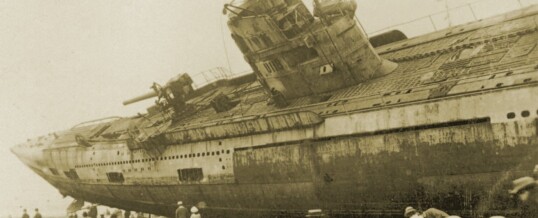
The best known ship to wreck on an April 15th was the Titanic, which was lost after hitting an iceberg in 1912. But, over the years, there were many other wrecks that took place on this day. Here are over two dozen of them. Today’s list includes brigs, schooners, troop-ships, freighters, minesweepers, and even a barque, a cutter, a steam-tug, and a submarine. If you are seeing this in a post, other than on Shipwrecks.com, read more about these wrecks and other ships lost on an April 15 at http://shipwrecks.com/shipwrecks-of-april-15/.
Today’s Shipwrecks™
April 15
Taken from Spence’s List™, as compiled and edited by Dr. E. Lee Spence
1771: The brig St. George, Captain Charles Stewart, from the Bay of Honduras for this Philadelphia, Pennsylvania, “was cast away in the Night of the 15th of April Last (April 15, 1771), in the Old Straits of Bahama (Old Bahama Channel), about 40 Leagues above the Metanzas (Matanzas, Cuba), and the Vessel and Cargoe entirely lost; the Captain and Crew afterwards took to their Boat, in order to proceed to Providence, but were taken up by a Spanish Schooner, and carried to the Havanna, from whence they were sent to New Orleans; from thence Captain Stewart went to Pensacola, and arrived here Yesterday from New York.”
1785: A sloop bound from Hispaniola with a cargo of sugar, molasses, coffee, etc., was lost on the Charleston Bar, South Carolina, on April 15, 1785, and only three of the crew were saved.
1808: The vessel Dryade, Captain Hoisbro, of and for London, was lost in coming out of Manchioneal Harbour, Jamaica, April 15, 1808. Her crew and small part of her cargo was saved.
1813: The brig Tartar, a prize to the American privateer ship General Armstrong, was chased ashore on the shoals of North Island near Georgetown, South Carolina, by a British brig of war in the middle of April, 1813, and went to pieces. The Tartar had been taken by the General Armstrong, while on a voyage from St. Barts and carried a cargo of 160 hogsheads of rum. Some of that cargo reportedly drifted ashore where it was saved. The rest was taken from the wreck by the Orion, Captain Weaver. But, there are also rumors that gold and silver, which had been taken from other captured vessels, was lost with her. The General Armstrong, 18 guns, 115 men, was commanded by Captain Guy R. Champlin, and was out of New York.
1813: The first cutter of the frigate Constellation, with sixteen men, overset off Norfolk, Virginia, on April 15, 1813. Lieutenant Biggs and Midshipman Philips were drowned but the rest were saved.
1816: The vessel Mary, from Norfolk to Trinidad, run on shore April 15, 1816, on Currituck Beach, North Carolina. Her cargo was expected to be saved.
1841: On April 15, 1841, the brig Maumee, of Warren, Maine, bound for Cedar Keys, with a cargo of hay, “was totally lost on Cottonary Key (sic, Cotton Bay Cay), Bahamas, in a strong N.E. gale. Crew saved.”
1852: The barque Vrow Gelie, of Emden, Germany, Captain Mennen, bound from Amsterdam for Darien, Georgia, was totally lost on Abaco in the Bahamas on April 15, 1852.
1856: The steam tug Tybee, Henry Wilson, was sunk near Darien, Georgia, in the middle of April, 1856. It said that she had only recently been repaired and put in complete order, and that efforts were being made to raise her.
The Tybee was built at Philadelphia, Pennsylvania, in 1850, and first home ported at Savannah, Georgia. She was a side-wheel steamer, had a wood hull; one deck; one mast; no galleries; and no figurehead. Her measurements were 92.8′ in length; 18.5′ in breadth; 8′ in depth of hold; and 127 26/95 tons. She was owned by Joseph B. Bloodgood and William M. Bloodgood.
1898: The three-masted schooner T.W. Hyde, Captain J.W. Carver, bound from Philadelphia to the Dry Tortugas and Key West, with coal and oil, was wrecked on the Dog Rocks, Cay Sal, Bahamas on April 15, 1898. Built in 1881 at Bath, Maine. She was 147.9 feet in length, 33.2 feet in breadth, 12 feet in depth, 448 net tons and 515 gross tons. She was single decked and was constructed of oak and yellow pine with iron and copper fastenings.
1912: The British passenger liner Titanic hit an iceberg on the night of April 14, 1912, and sank less than three hours later in the wee hours of April 15, 1912. She was the largest passenger vessel in the world and had been hyped in the press as “unsinkable.” 1,517 people went down with her, making her one of the most infamous wrecks of all time. There are entire websites devoted to her history so I am just mentioning her, so I won’t be swamped with emails saying that I missed her.
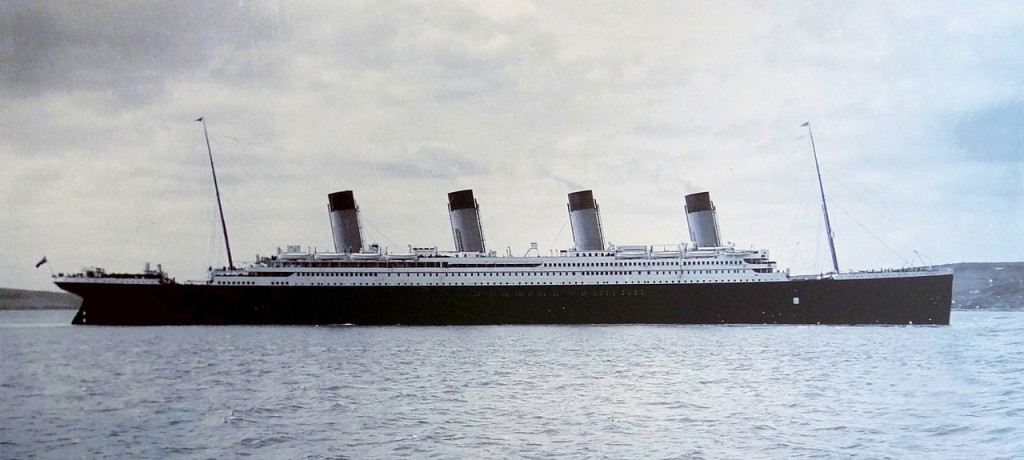
The RMS Titanic in Cobh Harbour, Ireland, just four days before her loss.
Courtesy of Cobh Heritage Centre, museum in Cobh, Ireland
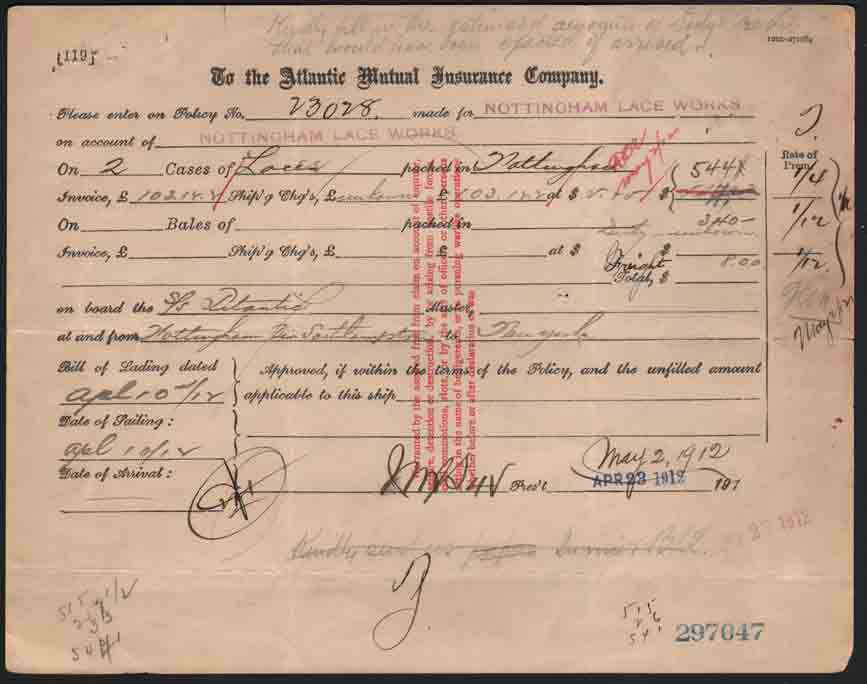
Atlantic Mutual Insurance Co. insurance document on Titanic cargo.
From the collection of Dr. E. Lee Spence
1941: The British freighter Aurillac, bound from Takoradi, Ghana, for Workington, England, via the island of Madeira, was torpedoed and sunk shortly after 9:30 in the evening on April 15, 1941, by the Italian submarine Enrico Tazzoli, Captain Vittore Raccanelli. The Aurillac, which was part of convoy SL-69 but had gotten behind, was loaded with 5,500 tons of manganese ore and quite likely other far more valuable metals. Reginald Andrews, a cook, was lost. The remainder of her crew, 40 in number, survived. Her location was reported as latitude 37°09′ north, longitude 18°42′ west. The British ocean boarding vesse, HMS Camito, spotted her wreckage, but did not see any survivors.
The Aurillac was built in 1921. She was 4,733 gross tons, 360′ in length, and 52′ in breadth. (Note: At least one contemporary news account, which was repeated in a number of papers, described her as a “French freighter.”)
1915: The British coaster Ptarmigan, 784 tons, was torpedoed and sunk, with the loss of five crew, by the Imperial German submarine by UB-5 in the North Sea. The location was reported as 6 nautical miles (11 km) west by north of the Dutch lightship Noord Hinder.
1916: The British cargo ship Fairport, 3,838 tons, was torpedoed and sunk by the Imperial German U-69 in the Atlantic Ocean on April 15, 1916. She was lost 31 nautical miles (57 km) north by west of the Bishop Rock, Isles of Scilly, in latitude 50°18′ North, longitude 6°52′ West. Her crew survived. The same day and in the same general area, U-69 boarded and scuttled the Imperial Russian barque Schwanden, 844 tons.
1917: The British troopship HMS Cameronia, 10,963 tons, was torpedoed and sunk by the Imperial German submarine U-33 in the Mediterranean Sea on April 15, 1917. with the loss of 140-210 of the 2,650-plus people on board. Survivors were rescued by British Royal Navy vessels HMS Nemesis and HMS Rifleman. The location of the sinking was reported as 150 nautical miles (280 km) east of Malta in latitude 35°50′ North, longitude 17°32′ East.
1917: The Danish schooner Fram, 105 tons, was shelled and sunk by the Imperial German submarine U-93 on April 15, 1917, in the North Sea in latitude 56°35′ North, longitude 2°45′ West.
1917: The British passenger ship Mashobra was torpedoed and sunk by an enemy submarine, with the loss of eight lives, in the Mediterranean Sea on April 15, 1917. Her captain was taken as a prisoner of war. The sinking took place about 140 nautical miles (260 km) south west of Cape Matapan, Greece, in approximately latitude 35°34′ North, longitude 20°40′ East.
1917: The Danish barquentine Astræa, 260 tons, was set afire and sunk by the Imperial German submarine U-55 in the Atlantic Ocean south west of the Isles of Scilly, United Kingdom, in latitude 49°00′ North, longitude 10°30′ West. Seven of the Astræa’s men were lost.
1917: The Norwegian coaster Tusnastabb struck a mine and sank in the English Channel off Cap Gris Nez, Pas-de-Calais, France, on April 15, 1917. No lives were lost. The approximate location of the loss was reported as 50°54′ North, 1°34′ East.
1917: The Norwegian coaster Møhlenpris, 638 tons, was sunk by the Imperial German submarine UB-40 in the English Channel 15 nautical miles (28 km) south west of Beachy Head, East Sussex, United Kingdom in latitude 50°38′ North, longitude 0°15′ West. The Møhlenpris’ crew survived.
1917: The British troopship HMS Arcadian, 8,939 tons, was torpedoed and sunk, with the loss of 277 lives, by the Imperial German submarine UC-74 in the Mediterranean Sea. The sinking was reported as 26 nautical miles (48 km) north east of Milos, Greece in latitude 36°50′ North, longitude 24°50′ East.
1917: The British trawler Sutterton, 160 tons, was scuttled in the North Sea on April 15, 1917. Her position was given as 65 nautical miles (120 km) east south east of St Abb’s Head, Berwickshire in latitude 55°45′ North 0°15′ west by the German submarine UC-44 with the loss of one man.
1917: The British cargo ship Gretaston, 3,395, was torpedoed by the German submarine UC-27 on April 15, 1917, and sunk in the Atlantic Ocean. All 29 of her men and officers perished. The location was given as in latitude 43°08′ North, longitude 11°32′ West.
1918: The Imperial Russian Navy transport ship Rostov was sunk in the Black Sea south of Sevastopol (Sebastopol) on April 15, 1918, by the Imperial German submarine UC-23. Her location was reported as latitude 44°34′ North, longitude 34°20′ East.
1918: The British cargo ship Ailsa Craig, 601 tons, was sunk in the English Channel, by the Imperial German submarine UB-80, on April 15, 1918, fourteen nautical miles (26 km) west by north of Portland Bill, Dorset, England. Her general location was reported as latitude 50°30′ North, longitude 2°48′ West. Her crew was saved.
1919: Just before 1:00 in the morning of April 15, 1919, the former Imperial German Navy submarine U-118, which had been transferred to France after the end of the first World War, ran aground on the beach at Hastings in Sussex, England, due to the breaking her tow line in a storm. The submarine was beached directly in front of the Queens Hotel, where she quickly became a popular tourist attraction. Thousands visited Hastings that Easter to see her.
U-118 was 1,164 tons and measured 267 feet 5 inches (81.52 meters) in overall length and 24 feet 4 inches (7.42 meters) in breadth. During the World War, her armament had consisted of four 19.7 inch (50 cm) bow torpedo tubes; 14 torpedoes; two 39 inch (1 meter) stern mine chutes; 42 mines; one 5.9 innch (15 cm) SK L/45 deck gun, with 494 rounds of ammunition.
She was scrapped in situ between October and December 1919. The deck gun was initially left behind, but was removed in 1921. Some of the ship’s keel and other parts from the submarine may yet remain buried under the sand.
1920: The American schooner Eagle Wing sprang a leak on April 15, 1920, and and her captain beached her at Santa Cruz del Norte, Cuba, to save the lives of her people.
1940: The Type VIIB German submarine U-49 was depth-charged and sunk in the Norwegian Sea off Harstad, Norway, on April 15, 1940, by HMS Brazen and HMS Fearless of the British Royal Navy. U-49 lost one of her crew of 42. Her armament consisted of five 21 inch (53.3 cm) torpedo tubes (four in the bow, one in the stern); with fourteen torpedoes or twenty-six TMA mines; one 3.46 inch (8.8 cm) deck gun (with 220 rounds); and one 0.79 in (2 cm) C/30 anti-aircraft gun. The wreck of U-49 was found in 980 feet (300 meters) of water by the Norwegian submarine Skolpen on March 3, 1993.
1941: The British freighter SS Aurillac was torpedoed and sunk by the Italian Navy vessel Tazzoli in the Atlantic Ocean on April 15, 1941, She carried a crew of 41. One life was lost. Her position was reported as latitude 37°09′ North, longitude 18°42‘ West.
1942: The German minesweepers M 3810 and M 4603, were bombed and sunk by aircraft of the British Royal Air Force at Le Havre, Seine-Maritime, France, on April 15, 1942.
1943: A quarter past three in the afternoon of April 15, 1943 United States Navy Consolidated PBY Catalina PBY-5A (83-P-5) of Squadron VP-83 out of Natal, Brazil sighted the Italian submarine Archimede surfaced and running about 5–7 knots. Archimede’s gunners spotted the plane about the same time and opened fire on her with the sub’s anti-aircraft guns. At an altitude of 6,000 feet and at a range of about one half mile, it appeared that the submarine was about to submerge. The plane immediately dove at an angle of about 60° and at about 2,000 feet released all four of her bombs. The submarine’s forward hatches were immediately blown off, its lighting destroyed and one Diesel engine was rendered inoperative. Because of the damage to its forward hatches Archimede was unable to submerge. Forty five minutes after the first attack another Consolidated PBY Catalina PBY-5A (83-P-12) from the same squadron arrived at the scene. At about 1,500 yards both plane and submarine opened fire. In this first run the plane dropped a load of four bombs from an altitude of 50/100 feet. One bomb tore through the aft hatchway, and ignited the oil deposit at the bottom of the hatchway. The four primed torpedoes in the aft tubes also exploded. Archimede plunged stern first, with her bow sticking out at about 50° angle. Six minutes after the explosions, the submarine sank in latitude 3°23′ South, longitude 30°28′ West. The planes saw between 30 and 40 survivors in the water, and dropped three rafts for them. A plane sent the next day could not locate the survivors. Meanwhile, the rafts drifted for several days, and survivors sighted a steamer on day seven, but she didn’t see them. Soon most of the people died due to their wounds, and/or from thirst. On the twenty-ninth day a raft washed ashore on the Island of Bailique near the Western shore of the Amazon River, where it was found by two Brazilian fishermen. There was only one survivor and he was weak and delirious.
1944: After over two years of safely escorting ships and minesweeping operations (between February 25, 1942 and April 15, 1944), the No.7-class, Imperial Japanese Navy, minesweeper W-7 was spotted by the British submarine HMS Storm while escorting a merchant ship from Port Blair, Andaman Islands. Storm fired two torpedoes. Both missed the merchant ship, but at least one hit W-7. Storm then went after the merchant vessel. After some time, a submarine chaser and an aircraft arrived on the scene and picked up survivors from W-7. According to HMS Storm’s log, almost an hour after being hit, W-7 “emitted a huge sheet of flames and slowly sank.” The location was reported as in the Indian Ocean off the Nicobar Islands in latitude 11°34′ North, longitude 93°08′ East. She was 740 tons and and carried a crew of 88.
• • •
NOTE: This is by no means meant to be a complete list of the vessels lost on April 15, as there have been thousands of ships lost for every day of the year. All of the above entries have been edited (shortened) and come from various editions of Spence’s List™. Spence’s original lists usually give additional data and are heavily footnoted. Those lists are being updated and are or will be made available for a fee elsewhere on this site.
© 2013, 2018 by Dr. E. Lee Spence for composition, content and compilation.
Share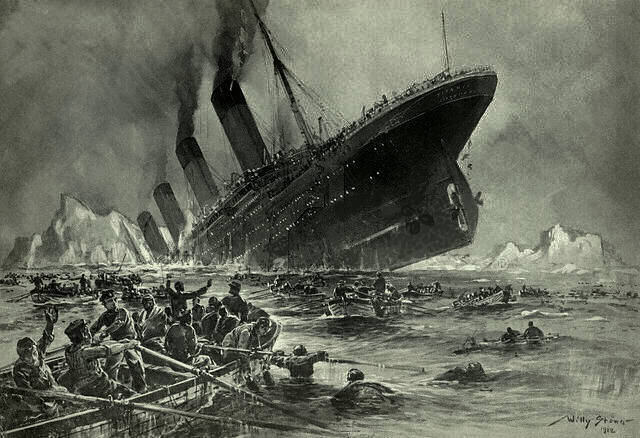
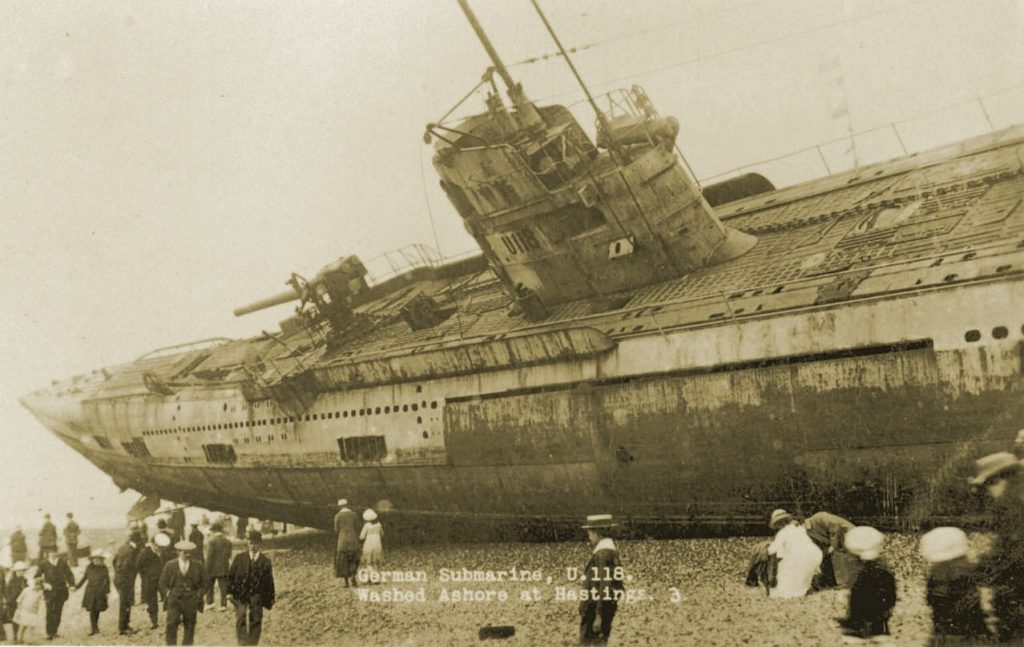
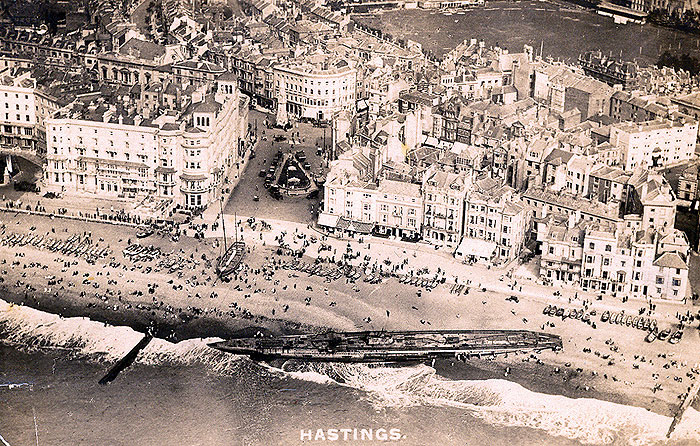
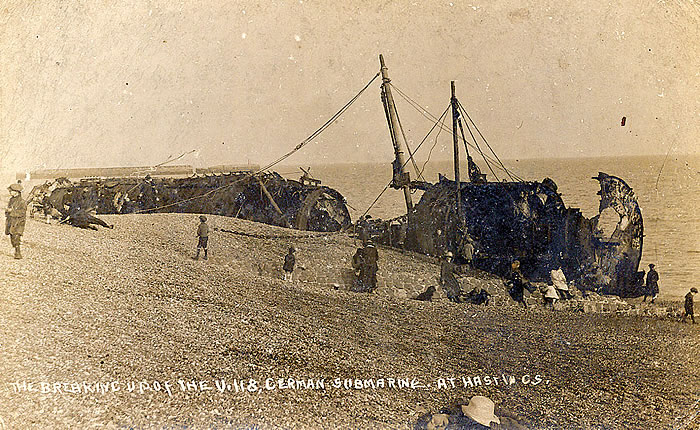
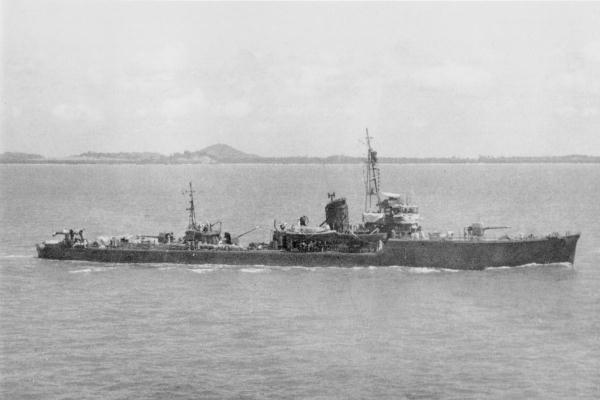
Go for the gold!!!!!
I hear you are the man who really found the Hunley submarine.